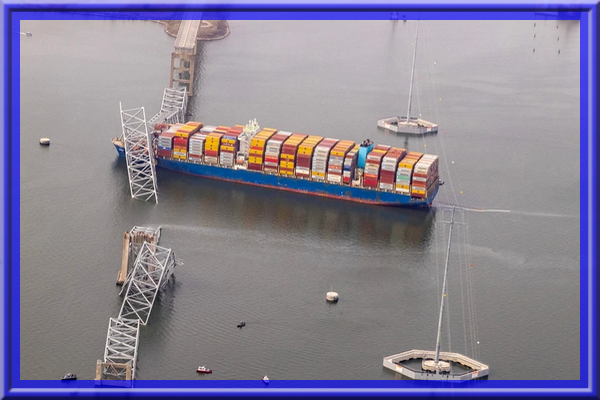
A warning from Baltimore about preparing for the next inevitable Canadian disaster
Authorities’ quick, decisive action may have saved many lives
To the inexpert eye — mine, anyway — the most astonishing immediate thing about footage of Baltimore’s Francis Scott Key Bridge collapsing was that a single container ship could take out such a massive piece of infrastructure. It was natural that much early inexpert conversation concerned the parlous state of America’s infrastructure.
Add a little context, though, and it wasn’t so surprising at all. The ship, the Dali, is as long as the Eiffel Tower is high, weighs 95,000 tons empty, and was carrying nearly 5,000 shipping containers.
“When you look at the failure in the video, the container ship is as wide as the bridge is tall,” Johns Hopkins University engineering professor Benjamin Schafer told Scientific American. “It’s hard to get your mind around how big it really is.” When you zoom in, Schafer notes, you can see the Dali essentially “obliterated” the support column it impacted. The bridge never had a chance.
Knowing that, the most remarkable thing might be that the bridge’s continued existence rested on none of the thousands of ships per year entering and exiting Baltimore Harbour ever running into it. Surely, at some point, that luck would run out. The Dali is not the largest ship to use the port, either: As of last year that honour went to the Ever Max, which is 20-per-cent longer than the Dali and carries twice as many shipping containers.
“It’s no secret why these massive container ships want to call on the Port of Baltimore,” Maryland Transportation Secretary Paul Wiedefeld enthused upon the Ever Max’s inaugural visit. “They know Maryland’s port is a valuable resource and a terrific partner in moving goods efficiently across the state and throughout the region.”
Various news outlets have detailed the safety features that could have been in place for the FSK Bridge but apparently were not: fenders meant to deflect impacts, or shoals or other barriers designed to ground ships before they make impact. It’s not clear whether those would have prevented the collapse, but such simple protections aren’t billion-dollar projects.
Especially since the FSK was a “fracture critical” design, meaning significant damage to any one steel component was likely to bring down the whole structure, it’s maddening such protections weren’t given a chance to save the day.
![]()


